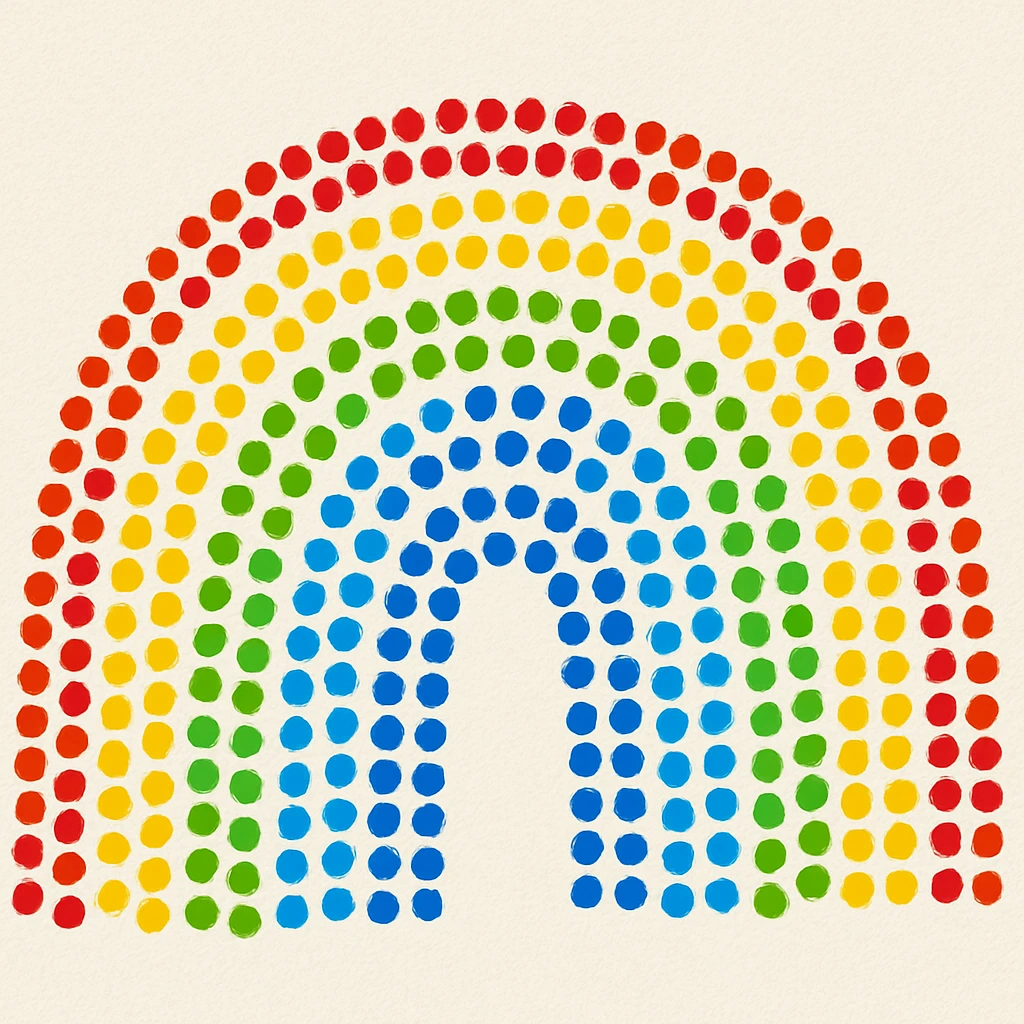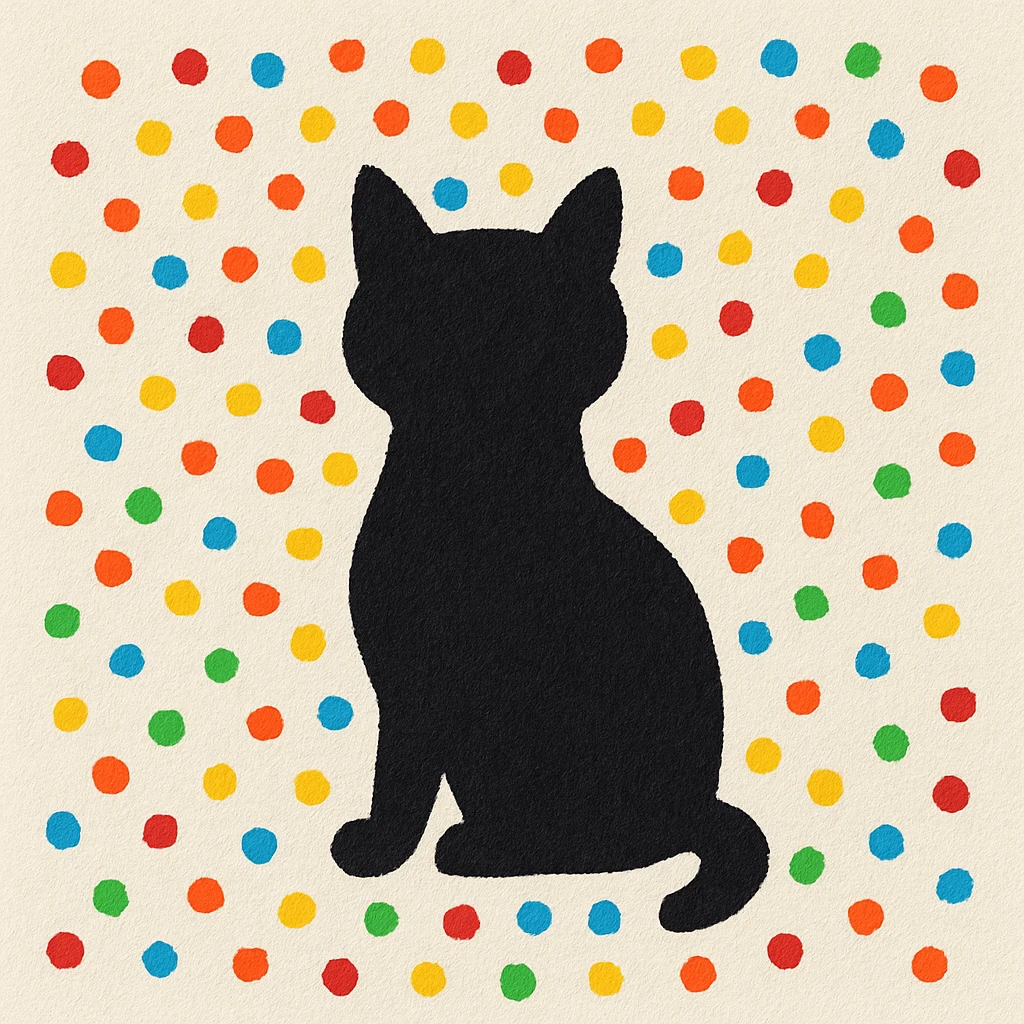Looking for a creative way to engage young artists? Pointillism is a fun and approachable art technique that uses dots to build vibrant images. Not only does it spark imagination, but it also helps develop patience, concentration, and fine motor skills. Here are 10 simple pointillism art projects that are perfect for kids at home or in the classroom.
Tips for Success:
- Tools: Cotton swabs, the back of paintbrushes, or fingers work great for dotting.
- Paints: Tempera or acrylics are vibrant and safe for kids.
- Patience: Pointillism is all about layering—encourage kids to take their time.
1. Rainbow Dot Lines
This beginner-friendly activity invites kids to draw arched lines in rainbow order, filling each band with colored dots. It’s a cheerful way to practice control and color recognition.

2. Animal Silhouette Dot Art
Cut out a silhouette of a favorite animal (like a cat, bird, or elephant), place it on a white paper, and have kids dot around it. When removed, a dotted animal shape remains!

3. Dot Tree with Q-tips
Using Q-tips as brushes, kids can create a seasonal tree—blossoms for spring, green for summer, or fiery hues for autumn. The repetitive dotting makes it both calming and satisfying.

4. Simple Sunsets
Children can blend warm colors—yellow, orange, red, and purple—using only dots to create dreamy sunsets. Add a silhouette of a mountain or tree to finish the scene.

5. Balloon Bouquet Dots
Draw a bunch of balloons and let the kids fill each one with colorful dots. This project lets them explore color combinations while working on circular motion.

6. Under the Sea Dot Art
Let kids create fish, coral, and seaweed using pointillism. Blues and greens dominate the background, while bright-colored sea creatures pop against the cool tones.

7. Dot Mandalas for Kids
Inspired by the symmetry of mandalas, kids can create simple circular patterns using dots. Start with a small center dot and radiate outward in even rows.

8. Dotty Self-Portraits
Encourage kids to recreate their face using only dots of various colors. It’s a playful twist on self-portraiture and allows them to explore identity through color.

9. Dot-A-Bug Garden
Draw bugs like ladybugs, bees, and caterpillars, then have the children fill them with intricate dot patterns. Add dotted flowers and grass for a full garden scene.

10. Famous Art Re-Creation: “Starry Night” in Dots
Introduce kids to Vincent van Gogh’s Starry Night, then challenge them to recreate it using dot techniques. It’s a fun way to mix art history with hands-on learning.

Frequently Asked Questions
How to do pointillism for kids?
To do pointillism with kids, start by choosing a simple image or shape. Using tools like Q-tips, the back of a paintbrush, or even fingers, kids apply small dots of paint to fill in the picture. It’s best to use bright, contrasting colors and encourage them to layer the dots without smudging. Keeping it playful and relaxed helps kids enjoy the process while building focus and fine motor skills.
Which artwork is an example of pointillism?
A famous example of pointillism is A Sunday Afternoon on the Island of La Grande Jatte by Georges Seurat. This iconic painting was created entirely with tiny dots of pure color, which blend visually from a distance. It’s a great reference when introducing kids to the style, showing how small details can come together to form a complete image.
How to do dot art for kids?
Dot art for kids involves creating pictures or patterns using only dots. Begin with an outline or stencil, and let children fill in areas with rows or clusters of dots using paint and tools like cotton swabs or markers. Simple themes—like rainbows, animals, or shapes—work best, and it’s a fun way to explore color, spacing, and repetition.
How do you use Q-tips in pointillism?
Q-tips are perfect for pointillism because they’re easy for small hands to grip and make neat, round dots. Dip the Q-tip into paint, then dab it gently on paper to form a dot. Encourage kids to clean the tip or use a new one when switching colors to keep the artwork bright and clear. They’re an ideal, low-mess tool for young artists experimenting with dot techniques.
Conclusion
Pointillism may look complex, but at its core, it’s a wonderfully simple technique that invites kids to slow down and enjoy the creative process, one dot at a time. These easy projects make the art form accessible and fun, whether you’re a parent looking for a quiet afternoon activity or a teacher planning a classroom craft. With minimal supplies and limitless potential, pointillism helps children express themselves through color, pattern, and patience—turning tiny dots into big bursts of creativity.

